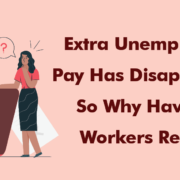More than 20 states will see updated rates as the calendar turns to 2020.
The following state changes will go into effect either Dec. 31 or Jan. 1, 2020. (Note: This information does not take into account city and county minimum wage rates, which may take precedence depending on the jurisdiction.)
Alaska
State law requires a minimum wage adjustment each year based on the Consumer Price Index (CPI). State officials have announced the new rate for next year: $10.19
Arizona
Arizona’s next increase is scheduled. Next year, the new rates will be: $12
Arkansas
In 2018, voters passed Issue 5 to increase the state minimum wage, with the 2020 rate going to $10.
California
California has different rates for small and large employers. Small is defined as having 25 employees or fewer; large means 26 or more. One of the most progressive states in the nation, California will have a $15 minimum wage in 2022.
The new 2020 rates are $12 for small employers, $13 for large employers.
Colorado
Come 2020, the new rates will be: $12
(Also of note for employers: Colorado recently gave cities the power to set their own rates.)
Florida
Effective Jan. 1, 2019, Florida tied its minimum wage to an annual indexed rate. Starting in 2020, the new rates will be: $8.56.
Illinois
In February 2019, Gov. J.B. Pritzker signed into law the first minimum wage increase in Illinois since 2010. It will reach $15 in 2025. Meanwhile, starting Jan. 1, 2020, the minimum wage will be $9.25.
Maine
Maine has a planned increase for its minimum wage: $12
Maryland
Minimum wage will increase by 90 cents to $11 an hour. Note that starting in January 2021 the state will have different rates for large and small employers. (Large being 15 or more workers and small defined as 14 or fewer.)
Massachusetts
In 2018, Massachusetts passed legislation to increase minimum wage to $15 by 2023. In the meantime, the new rates for 2020 will be: $12.75
Michigan
Increase its minimum wage, but only slightly. The 2020 rates will be: $9.65.
Minnesota
Different rates for large and small employers. But the definition of large or small isn’t tied to the number of employees. Instead, Minnesota uses gross receipts — more than $500,000 is considered large, less than $500,000 is considered small. (The state has no separate rate for employees who receive tips.)
New rates in 2020: $10 for large employers, $8.15 for small employers.
Missouri
New law: While the rate won’t hit $12 until 2023, annual increases of 85 cents are in place.
In 2020, meanwhile, the rates will increase to: $9.45
After 2023, the rate will be increased according to the CPI.
Montana
Minimum wage workers will see a small increase next year, with the rate going to $8.65. The rate is tied to changes in the CPI for Urban Consumers.
New Jersey
Enacted a new law which resulted in increases in July. Moving forward, the rate will increase based on the CPI or at least $1, whichever is greater. (The rate will hit $15 for most employers in 2024.)
Also note that rates differ depending on employer type. In 2020, the minimum wage will be:
- $11 for most employers
- $10.30 for seasonal and small employers (fewer than six workers)
- $10.30 for agricultural employers
New Mexico
Passed a new law in 2019. The initial increase is a big one, too, up $1.50 from the current rate.
In 2020, minimum wage will be: $9 The rate will top out at $12 in 2023.
New York
The 2020 the rate is going up to $11.80.
Ohio
Minimum wage in Ohio is tied to a company’s gross receipts, with $319,000 as the threshold defining a “large” employer.
Come 2020, the new rates will be: $8.70 for large employers. $7.25 for small employers (the federal rate).
South Dakota
The minimum wage is adjusted annually via the CPI (though the rate can’t be decreased). In 2020, the new rates will be: $9.30
Vermont
Began indexed increases in 2019. Minimum wage workers will see modest bumps in 2020: $10.96
Washington
Passed a minimum wage ballot initiative in 2016. The new rate in 2020 will be $13.50.





